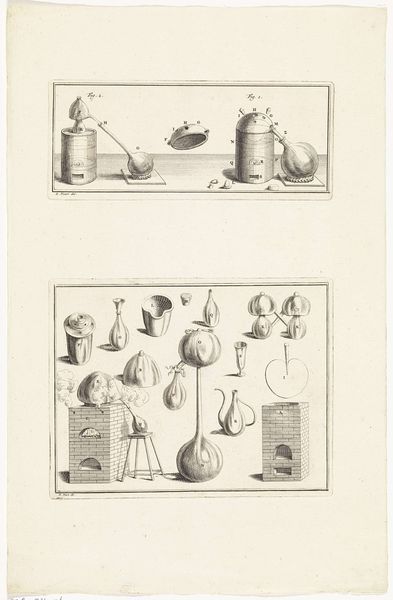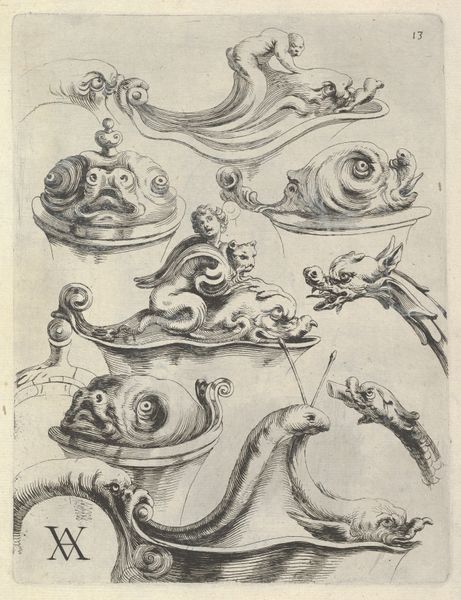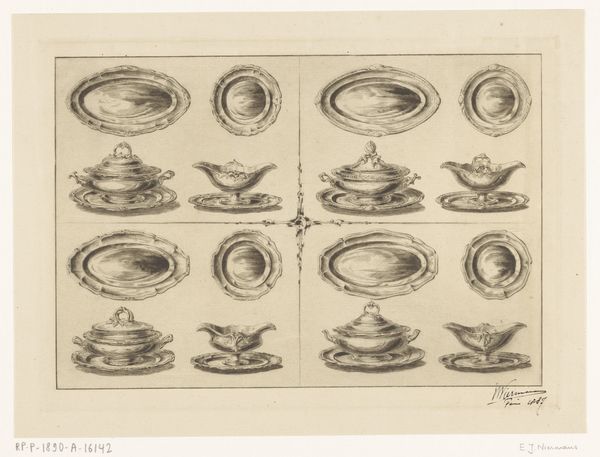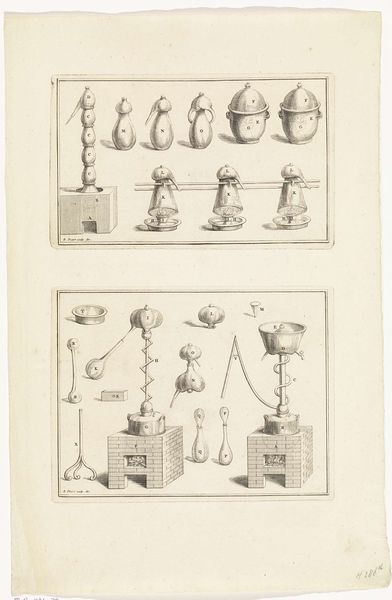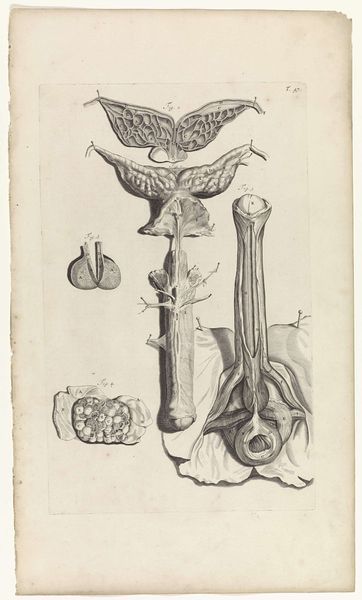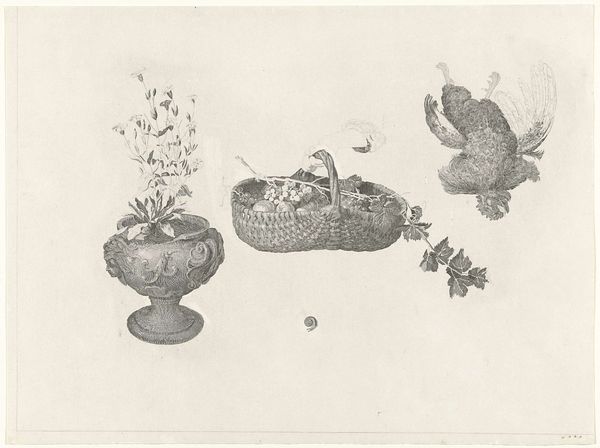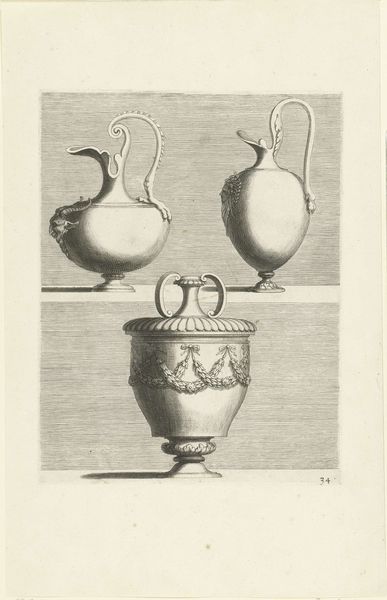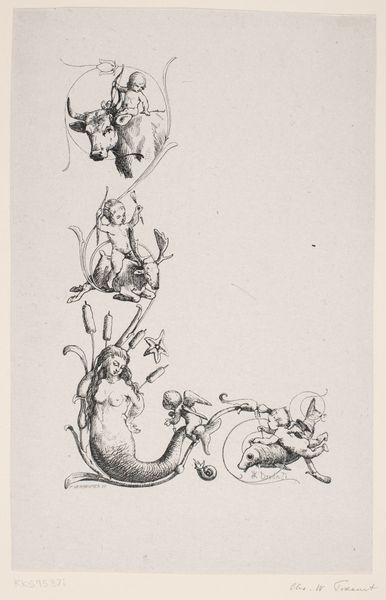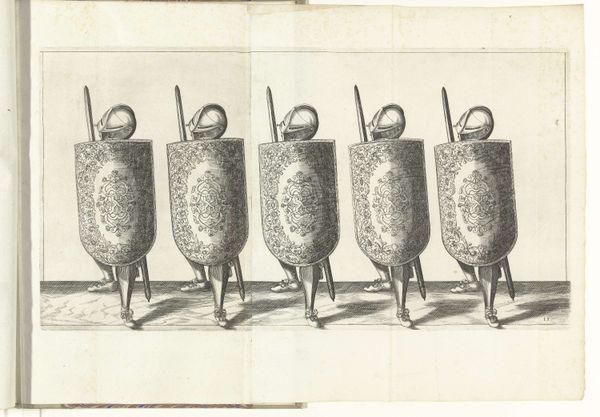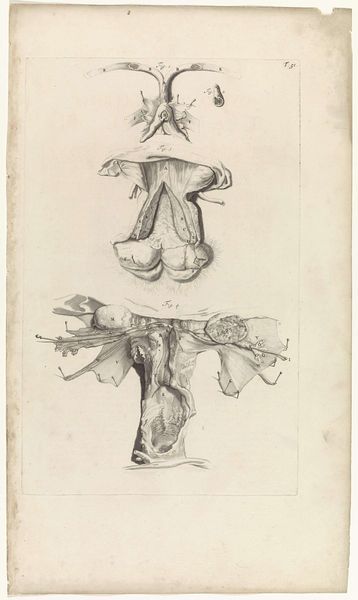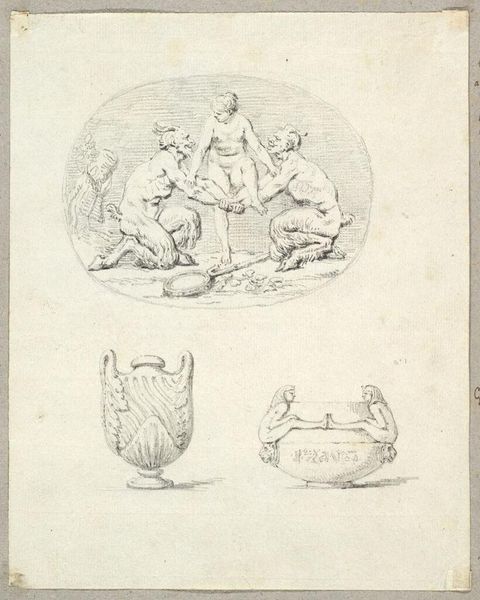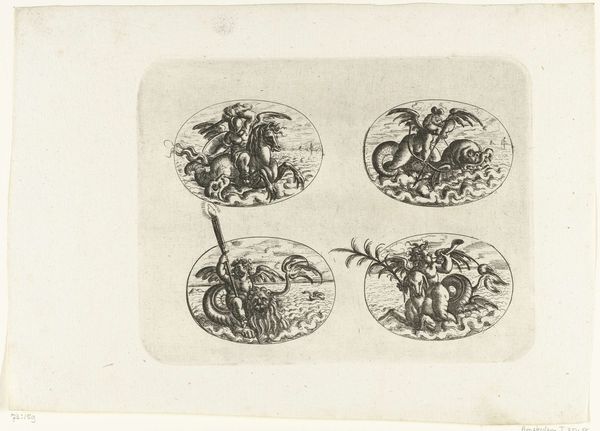
drawing, etching, paper, ink
#
drawing
#
baroque
#
etching
#
pencil sketch
#
figuration
#
paper
#
ink
#
academic-art
#
realism
Dimensions: width 275 mm, height 441 mm
Copyright: Rijks Museum: Open Domain
This anatomical study of vertebrae was made by Pieter van Gunst in the late 17th or early 18th century. In this detailed engraving, the vertebrae, with their distinct shapes and structures, evoke the enduring human quest to understand our physical selves. The spine, represented here, is not just a column of bones, but a potent symbol recurring across cultures. Think of the Tree of Life, often depicted with a central trunk mirroring the spine, connecting heaven and earth. Just as the spine supports the body, this arboreal symbol supports the cosmos. The spine is a repository of strength, vitality, and ancestral memory. Consider the serpent coiled around a staff, the Rod of Asclepius, symbol of medicine. Here, the serpent, an ancient symbol of healing and rebirth, entwines the staff like vertebrae. As symbols, these forms echo through time, reappearing in diverse contexts, carrying layers of cultural and psychological weight. The spine, like these symbols, has been repeatedly reinterpreted, demonstrating the enduring human fascination with the body's architecture.
Comments
No comments
Be the first to comment and join the conversation on the ultimate creative platform.
